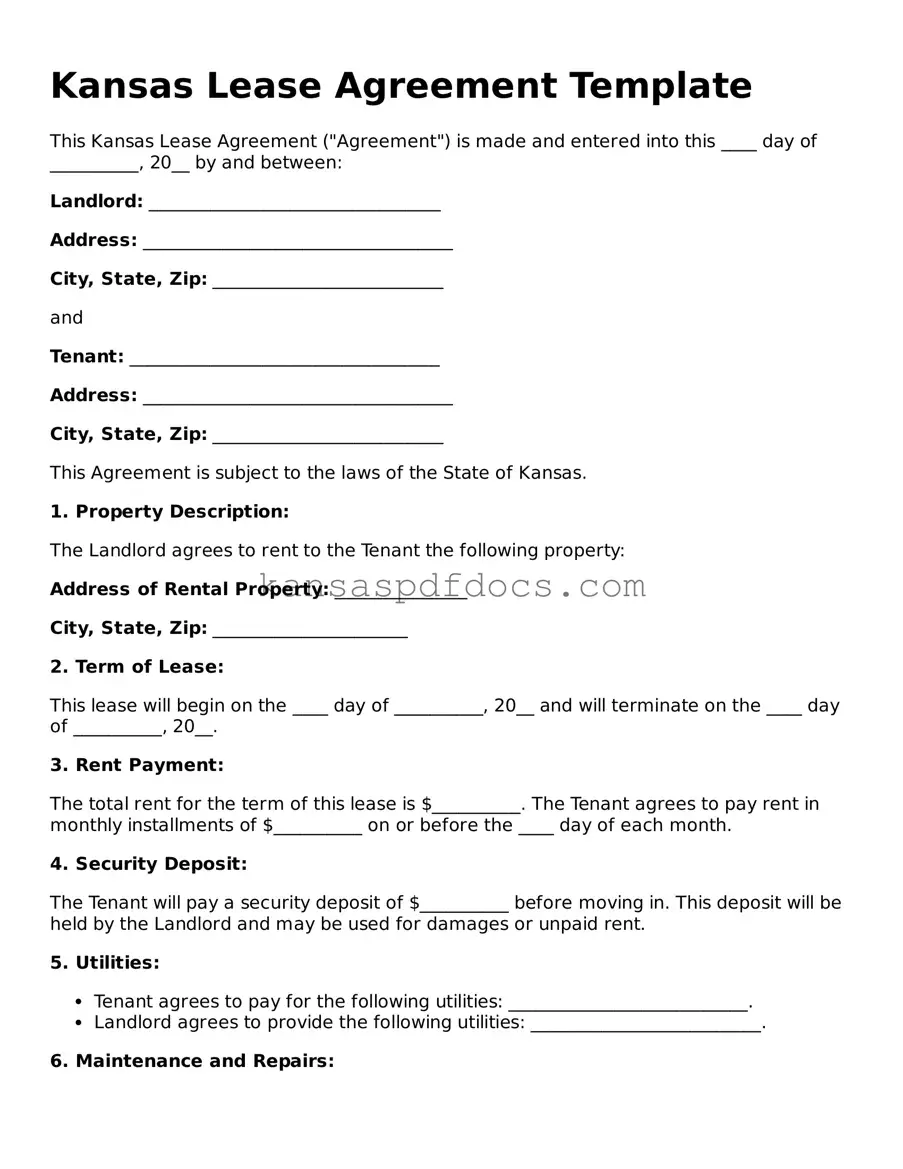Valid Lease Agreement Template for Kansas State
The Kansas Lease Agreement form is a legally binding document that outlines the terms and conditions between a landlord and tenant for renting residential or commercial property in Kansas. This agreement serves to protect the rights and responsibilities of both parties, ensuring clarity in the rental arrangement. Understanding its components is essential for anyone entering into a lease in the state.
Access This Form Now
